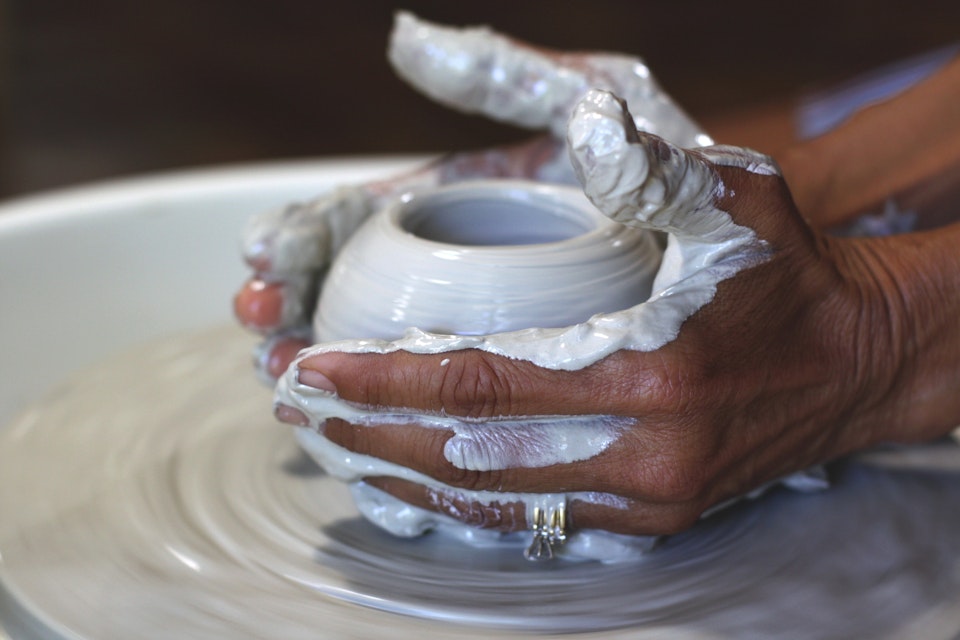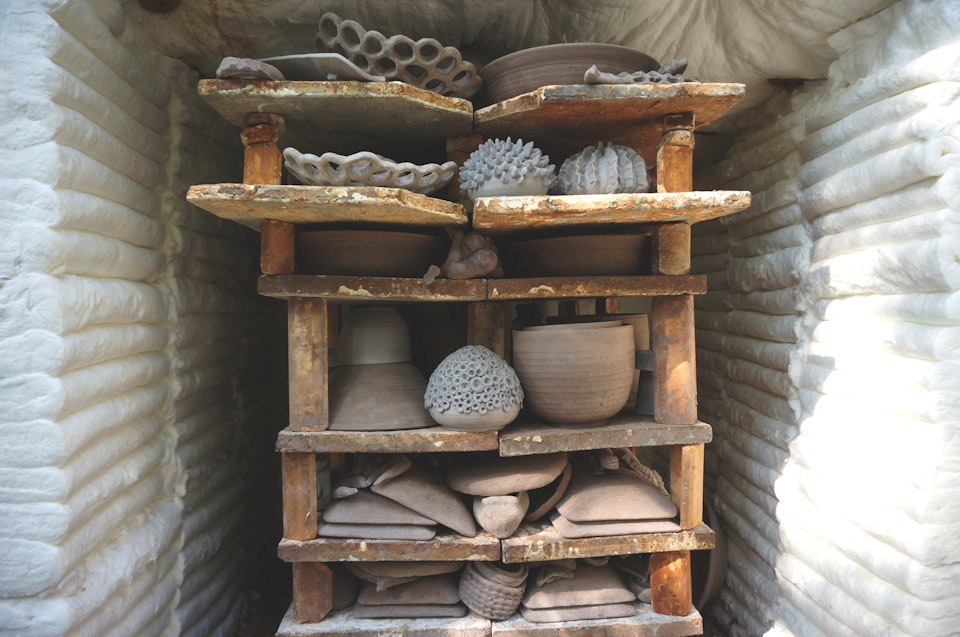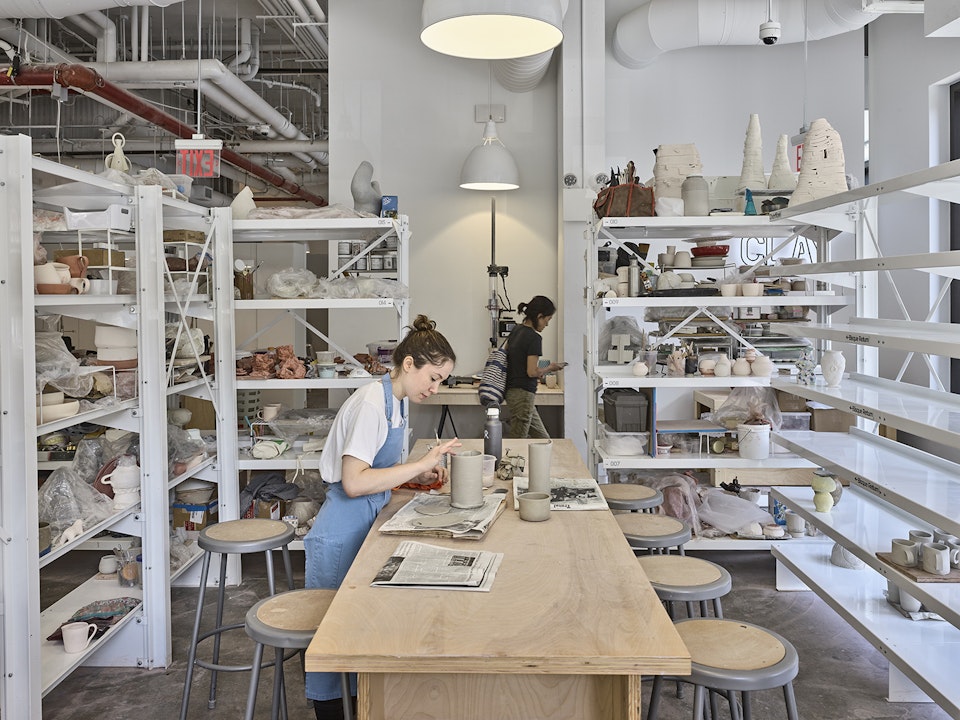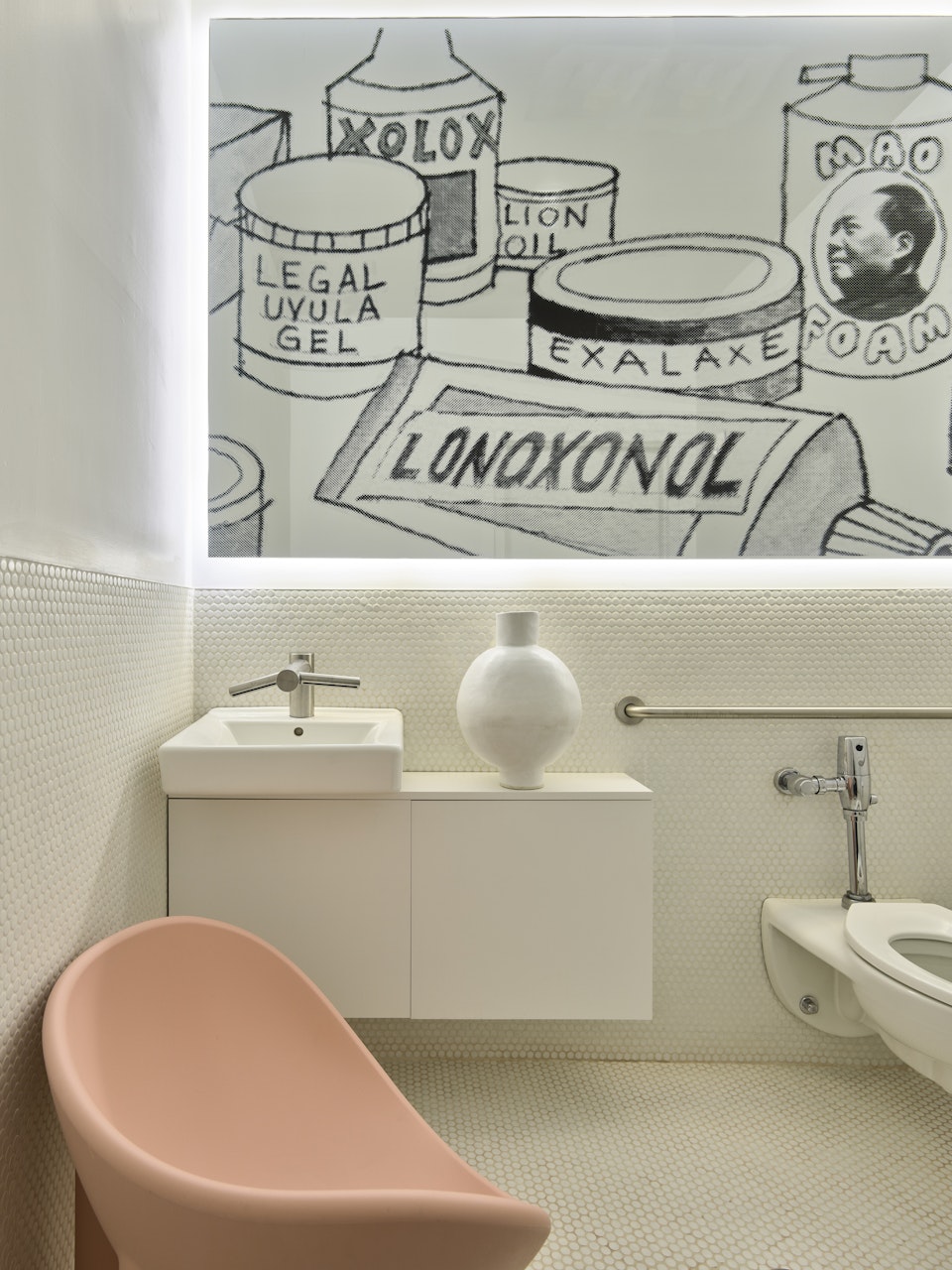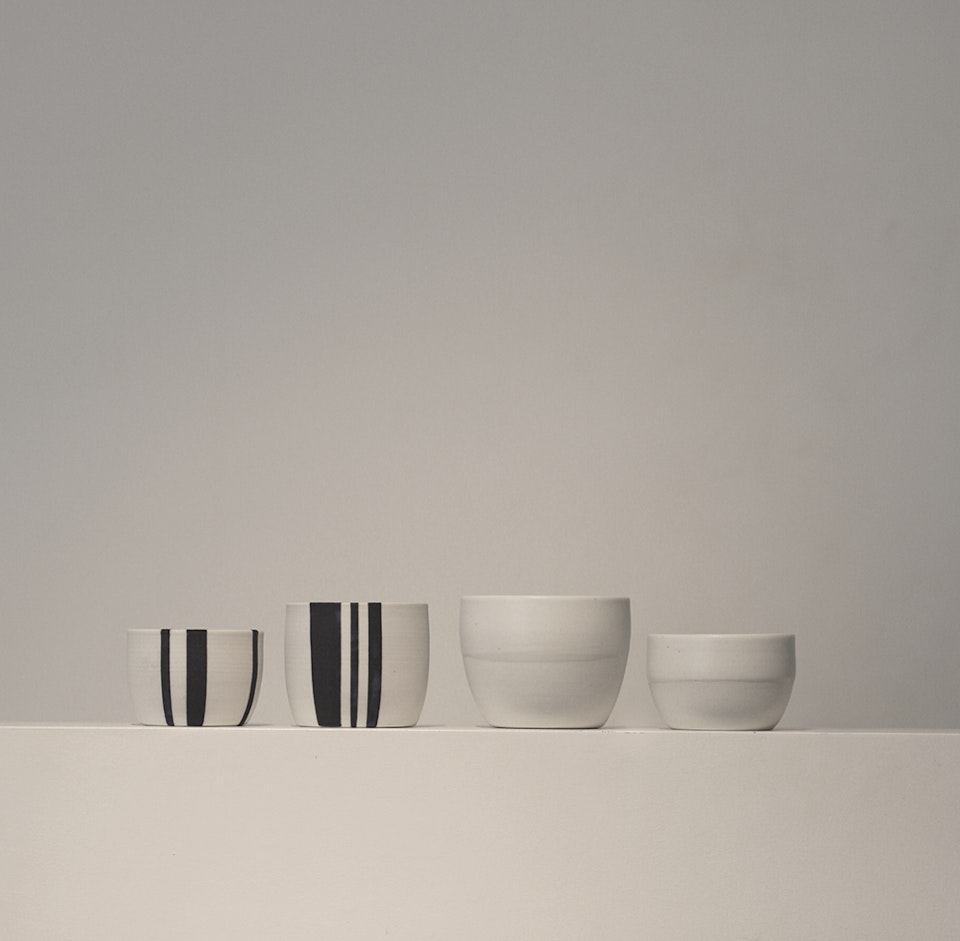August 06, 2019
How Ceramics are Disconnecting Us from our Phones and Reconnecting Us with Ourselves
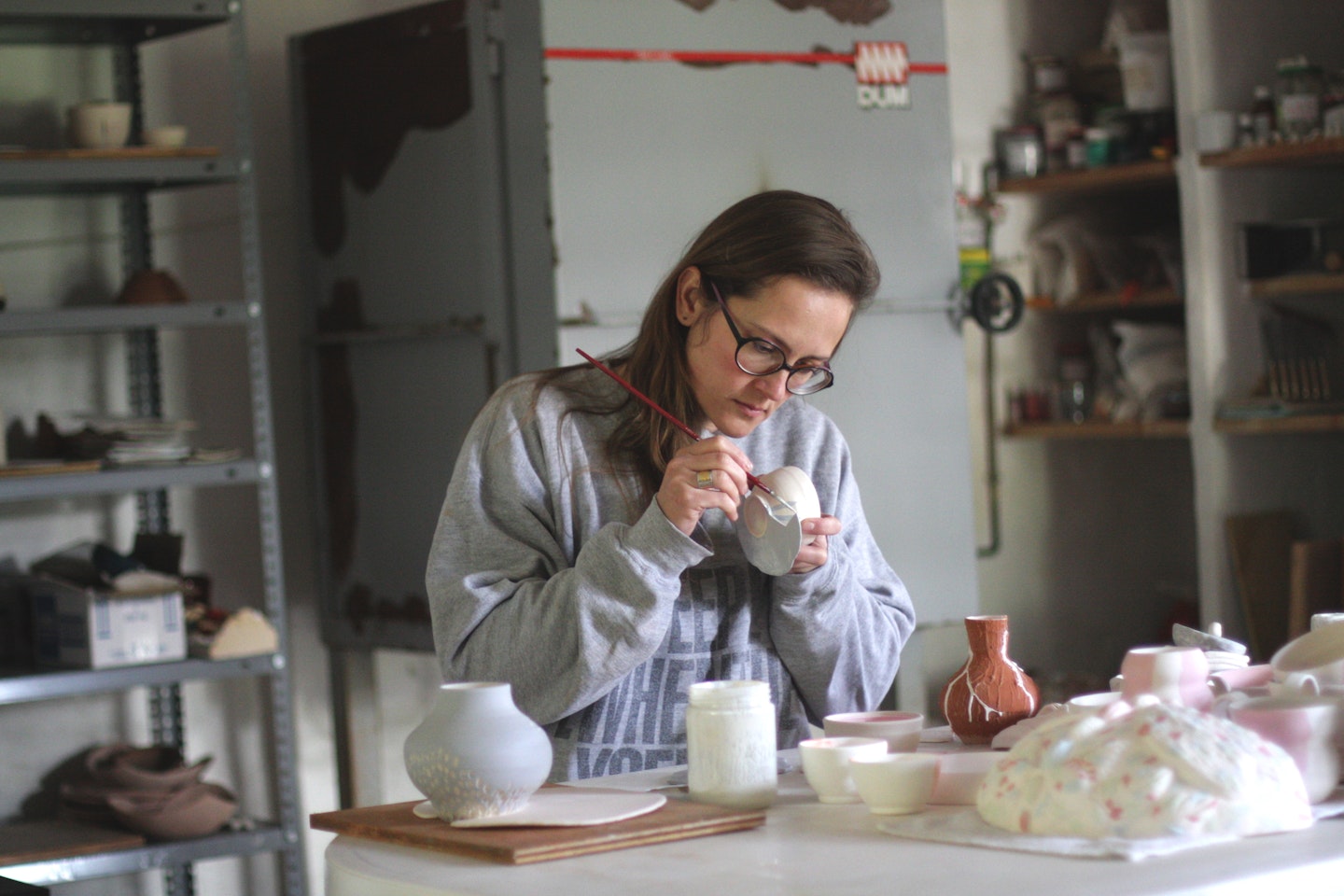
It’s about connecting with clay in a totally therapeutic way
Today, the art of ceramics has seen a distinct popularity boom. Some places like Brooklyn and Portland, Oregon are at the forefront of leading this movement.
“People are looking for alternatives to staring at their devices,” says Laura Vogel, operations director for BKLYN CLAY, which offers semester-long courses coupled with studio access for artists. “And when your hands are in mud, you literally can’t touch your phone…so it’s very therapeutic,” she adds.
Making objects with clay can be very therapeutic.
Some people gravitate to the earthy medium of ceramics when they’re going through a particularly hard time, like a divorce or life shakeup, explains Vogel. Ceramics is a very accessible art form and since our ancestors used clay for utilitarian objects including pots and holders, it is a very early art form as well.
The artform has many offshoots in several countries from Korea to China—many of which are seeing ceramics become quite mainstream. There have been many recent articles on the subject; some local villages from Korea to Brooklyn offer focused walking tours; and there’s also a monthly magazine devoted entirely to the topic.
Ceramics are an ancient art form, practiced during the Bronze Age in Mesopotamia.
Portland, Oregon, is also another city that is experiencing a ceramics popularity boom. RJ Tonneson, project manager and teacher at Georgie’s Ceramic & Clay (which offers classes coupled with studio access) recommends clay for the ease of accessibility. “Being able to mold and make things with your hands along with reducing waste is very important for people,” he told VAWAA.
Tonneson added that the studio has had no problem filling classes, and that several community studios have started to pop up around town. “As cities get more expensive, artists have a harder time getting goods to market and they tend to live in more rural areas and commute to the city,” he said. “So there’s a big community city vibe happening now.”
BKLYN CLAY offers many semester-long classes in ceramics. Courtesy of BKLYN CLAY.
This community vibe is also a very important aspect for those who want emotional support while building and making things: that sort of emotional support can be very empowering. “There’s no judgement when it comes to ceramics,” says Vogel, who notes almost all her topical courses get sold out each semester. “And you are making something you can use every day.” Since so many global traditions—such as Korean moon jars—take their roots in this art form, it gives people a sense of discovery and a sense of universal connectedness.
Michelle Quan, another Brooklyn-based artist who is well-known in the ceramics world, makes art and objects for the home and garden. “Impermanence & interconnection are ideas that I return to often, drawing inspiration from the writings and teachings of Buddhism and its extensive visual language,” she writes on her site.
You can find a use for ceramic-ware just about anyplace, even the bathroom! Courtesy of Frank Oudeman.
Artists get very attentive to all the details, which can include everything from mixing glazes to embracing imperfections. This type of super meditative approach and mindset is what Quan and other artists have come to love.
Some artists, like Alana Wilson from Sydney, Australia, have wares with noticeable imperfections and bleached hues. Ceramics can be so personal and offer such distinct narratives that the wares can tell the story of a maker even before you’ve had a chance to talk to him or her. That’s also really what makes the medium so special.
“Learning can often feel stuffy and boring but if you pair learning with a physical and tactile experience, that solidifies the learning,” adds Vogel. “It becomes a valuable educational experience.”
Since they come in many colors and prints, ceramics can stand out as design objects. Courtesy of Laura Vogel.
For VAWAA ceramics mini-apprenticeships; try an experience with Katja in Slovenia.
For more tips, stories and new artist updates, subscribe here.
